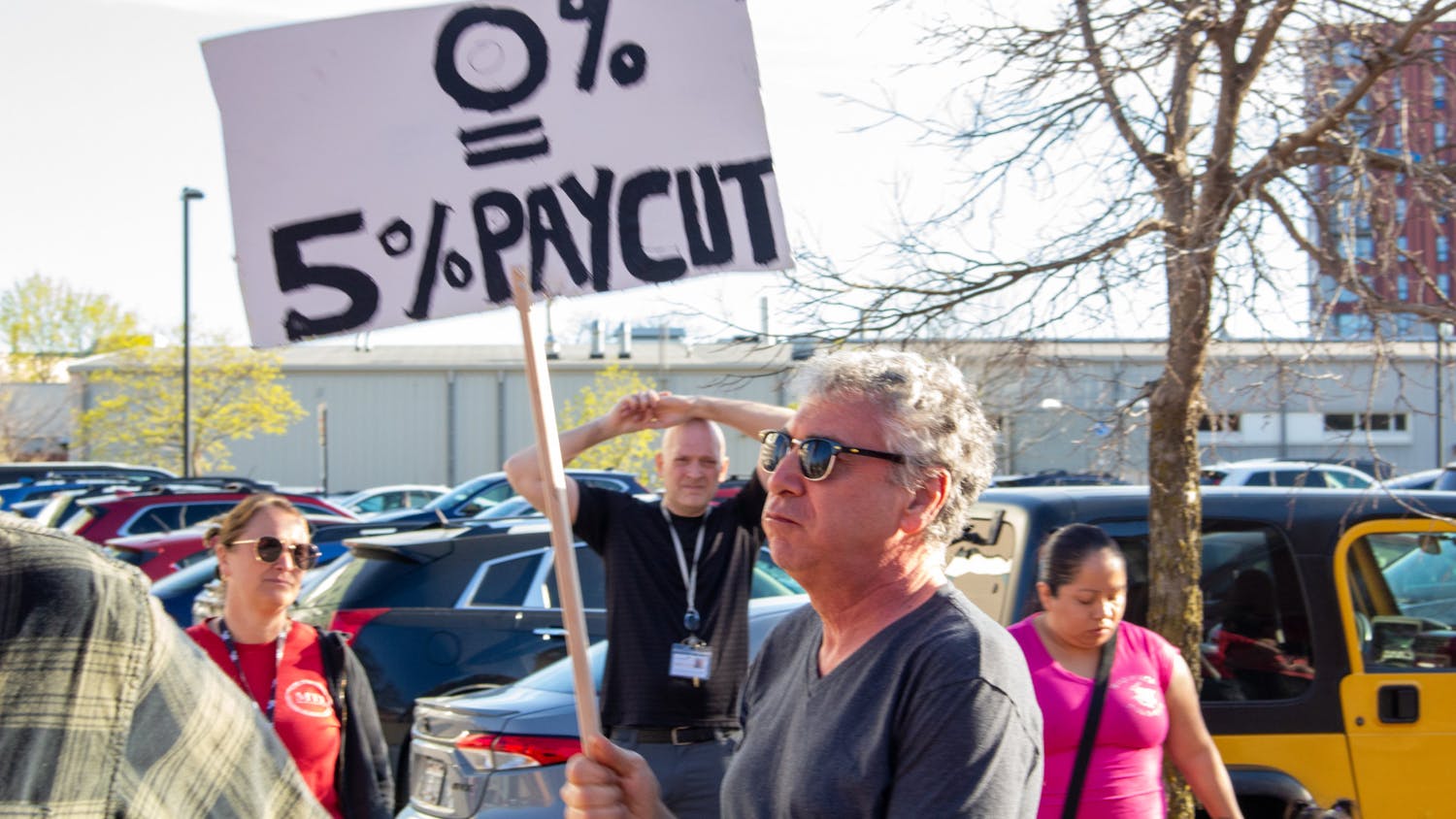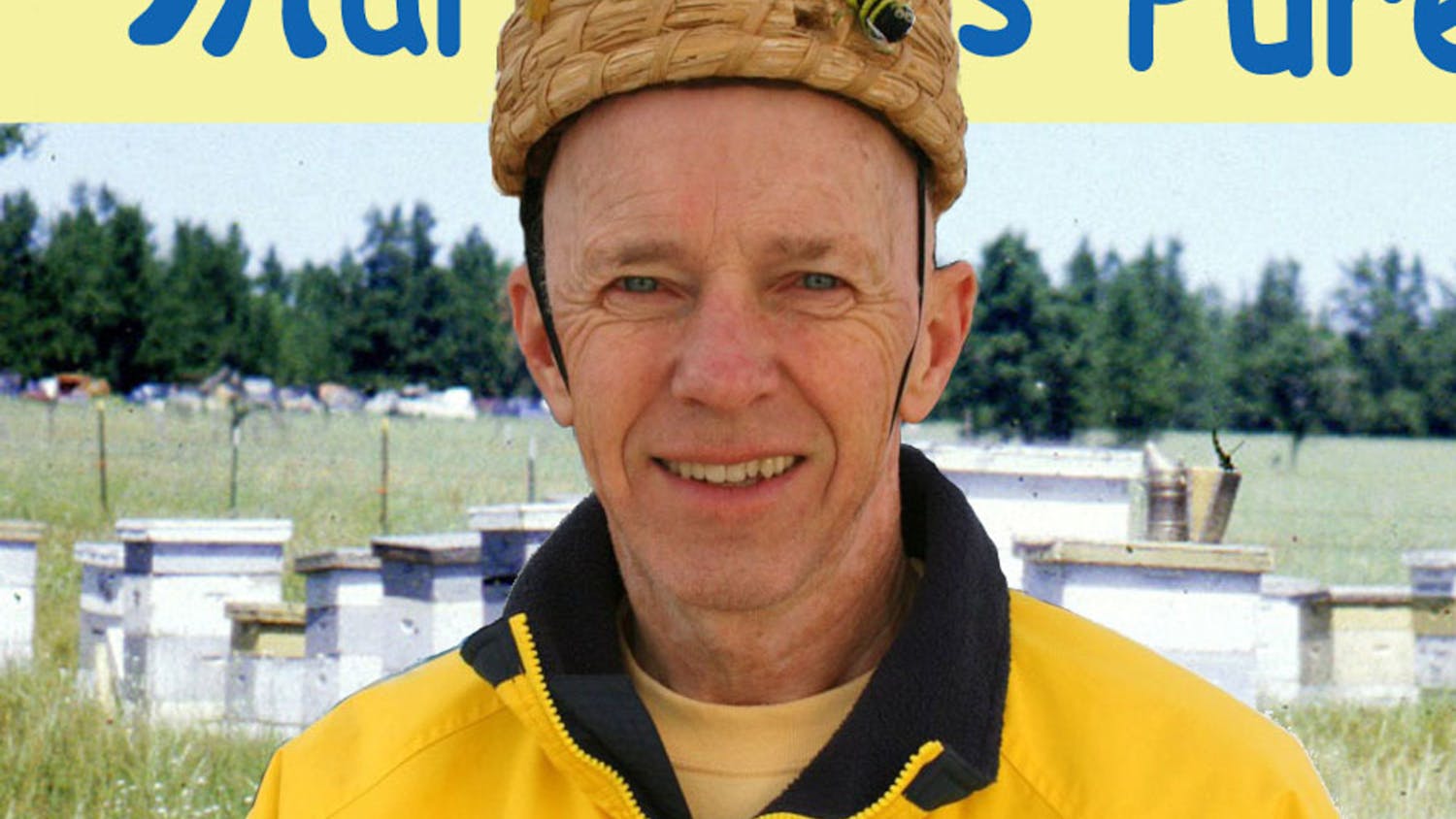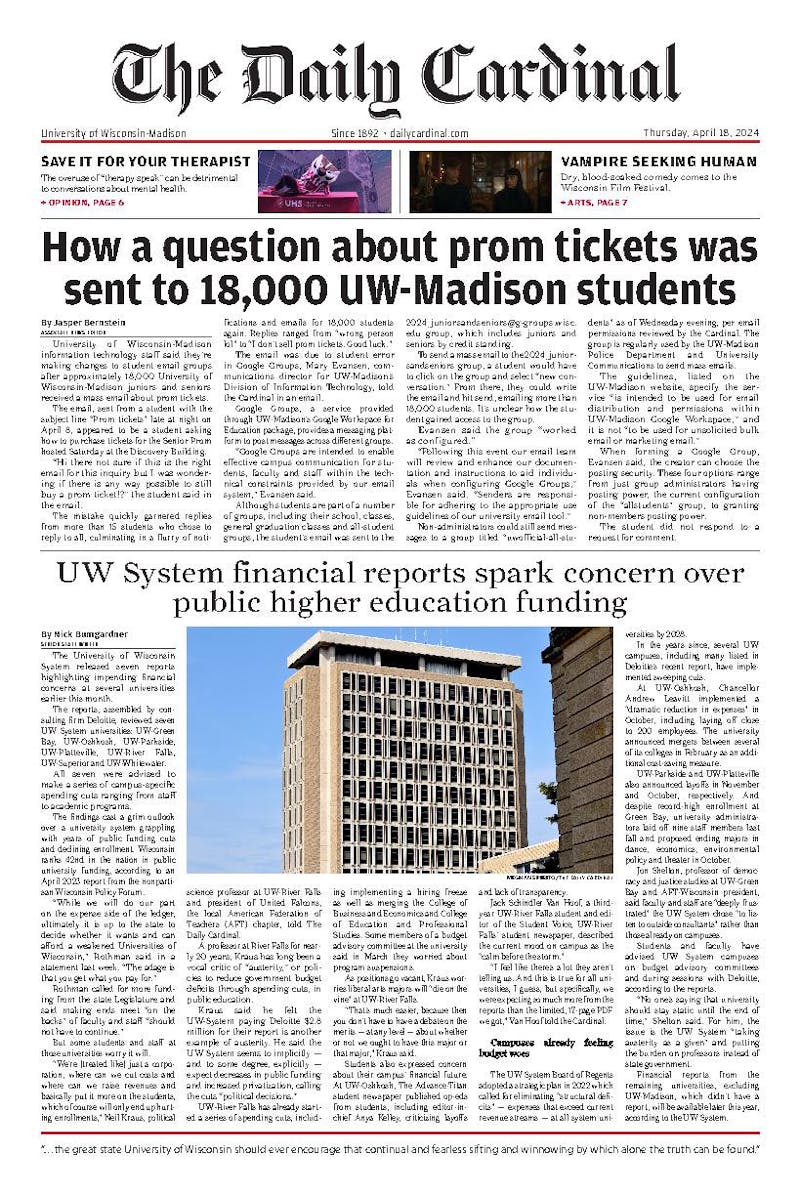The cycle of poverty affects every state in America. Due to varying policies and population levels, the number of people living in poverty can differ across border lines.
At first glance, Wisconsin’s poverty level seems to be under control. The overall poverty rate fluctuates but is generally at or above the national average.
However, there is more to the story of poverty in Wisconsin than just average-looking numbers. Statistics hide the massive gap of experiences between people of different races.
In fact, 14.5 percent of children in Wisconsin live in poverty. That equals about 182,000 kids — enough to fill Lambeau Field more than two times.
The breakdown of this percentage yields drastic variations based on the race of a child, however. Thirty-eight percent of Native American children, 36 percent of black children and 27 percent of Hispanic children in Wisconsin live in poverty.
“If you pick a random black kid out of Milwaukee, the chances that the family has an income of 40,000 or 50,000 a year is only like [12.5 percent], and for whites, it’s like 65 percent,” Tim Smeeding, a UW-Madison professor of public affairs and economics said.
Very similar numbers reflect the racially disproportionate incarceration rates in Wisconsin, once again changing the narrative of poverty in Wisconsin depending on race.
“The national data will tell you that the fraction of black men that are incarcerated in Wisconsin is among the highest two or three states in the country,” Smeeding continued.
The misconceptions regarding the narratives of the severity of poverty in Wisconsin may come from a flawed federal system of measurement. The official poverty measure used in Wisconsin leaves out the impacts of programs like refundable tax credits, work-related expenses and FoodShare.
Through the Institute for Research on Poverty at UW-Madison, Smeeding and senior fellow Julia Isaacs created the Wisconsin Poverty Measure, or WPM, in 2008 to try to combat these deficiencies. The WPM includes government support programs so that it can monitor their annual success levels.
“The commonly agreed upon standard poverty measure is highly imperfect in that it leaves out certain supports that people get from the government, so it doesn't give a good picture of what’s actually happening,” Tamarine Cornelius, an analyst for the Wisconsin Budget Project, a Madison-based financial research group, said. “At the same time, if you want to make comparisons you have to use the most widely adopted [measure], so we can't always measure progress.”
Regardless of measurement, Cornelius explained that poverty is a major issue in many parts of Wisconsin. Particularly, she highlighted the problems occurring in the very rural Northwest and the very urban Southeast.
While these communities have their differences, they share the economic similarity of a lack of economic development.
As residents move out of rural northwest neighborhoods, not enough people are moving in to replace them, and it drastically impacts the economic stability of their public institutions. For example, public schools function on a per-pupil basis, which means that their funding is based on how many students they retain.
The problem here occurs because as the number of students descreases, the federal funding is lowered while the expenses to maintain the school remain the same. This drastically affects the attractiveness of a community for families, pushing even more people out.
“Kids grow up and are ready to start their own families, but they aren’t starting them in their [rural] hometowns; they are moving to somewhere else in Wisconsin, like Madison or even Minneapolis,” Cornelius said. “While the number of people and children and families in northern counties goes down little by little, a snowball effect is created.”
Highly populated areas in southern Wisconsin, like Milwaukee, have densely concentrated areas of poverty. According to the 2018 annual report of the Wisconsin Poverty Project, Milwaukee county is the only county in Wisconsin that has a poverty rate above the state’s average.
“Milwaukee by many accounts is the most segregated city in America, and a couple of zip codes are the most incarcerated zip codes in the country,” Smeeding said. “Most low-income mothers would want to get out if they could but they can’t because they can't afford rent.”
Smeeding believes this problem is greatly linked to Wisconsin’s bottom level minimum wage. Twenty-nine other states have raised their minimum wage, but Wisconsin remains at the federal minimum of $7.25.
“Right now somebody working full time at minimum wage would still be below the poverty line if they had a kid,” Cornelius said. “Wisconsin has been working to make it harder to access supports for low income families by adding work requirements and other administrative hurdles to access support that can help families put food on the table or make ends meet.”
Under Gov. Scott Walker, the state passed reforms to require parents receiving government assistance programs to work a minimum number of hours per week. However, some experts fear that this could greatly impact the parents’ ability to have time to be what they are — parents.
Matthew Desmond, a Harvard professor and UW-Madison Ph.D graduate in sociology, described this dilemma in an article for The New York Times. He relays an anecdote accounting the struggles a single mother faces while trying to raise children in poverty.
Desmond wrote about the low minimum wage and accessibility of government support programs.
“It is not: can I get a job, employment is up so everything seems fine. Instead the question is, What kinds of jobs are available to people without much education? By and large, the answer is: jobs that do not pay enough to live on,” Desmond explained.
The picture created in the article, like Smeeding’s Wisconsin Poverty Measure, show the second story of poverty in Wisconsin. This story is easily overlooked because of the compilation of high white achievement with low non-white achievement, making poverty seem unproblematic by mixing the experiences of all people.
Cornelius urges the public to take both stories into account in order to address current social and economic crises across our state.
“We need to make sure we take care of people who aren't able to work, or are unable to find work for whatever reason, and boost families who are working but at low wages.”





